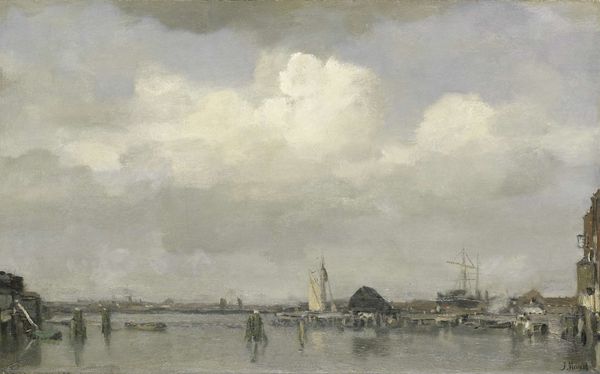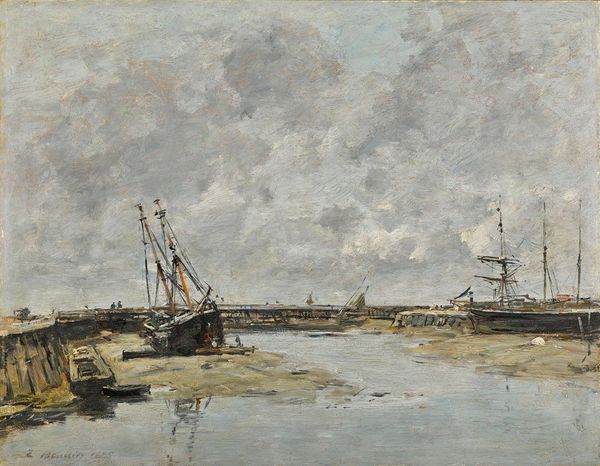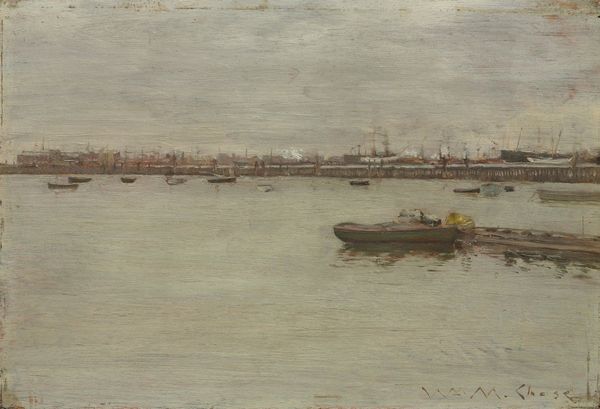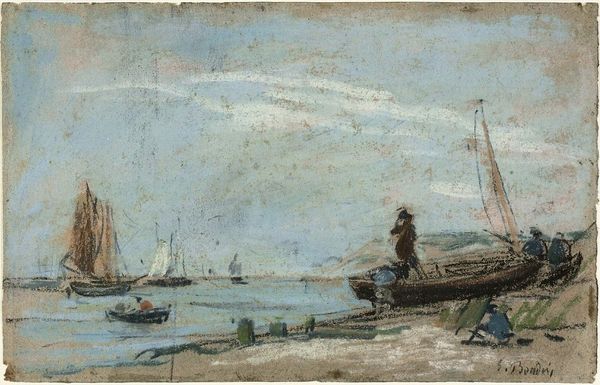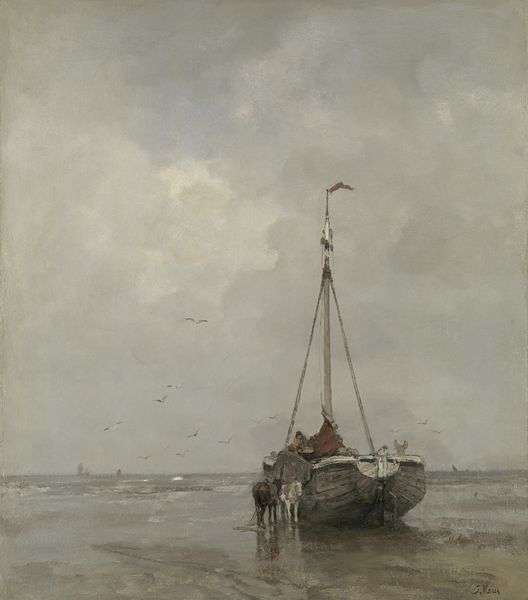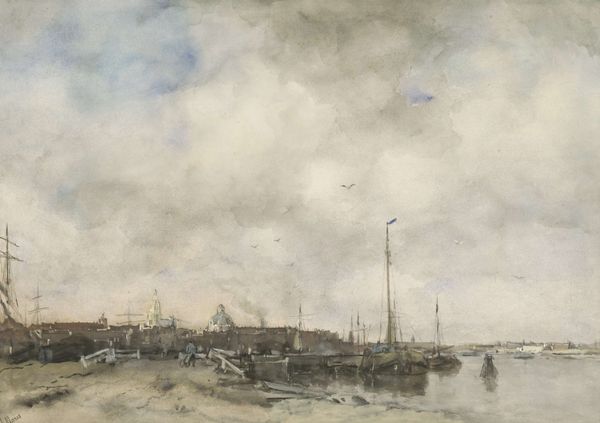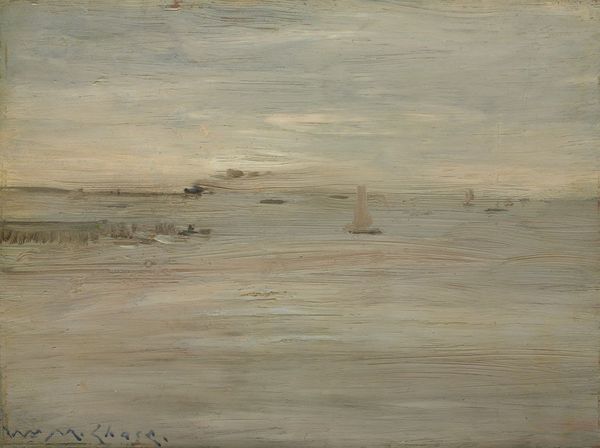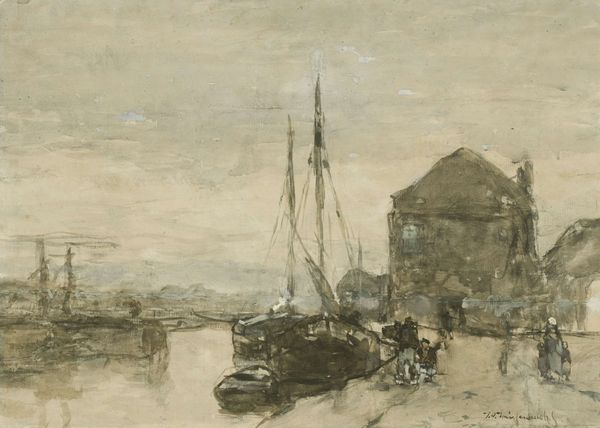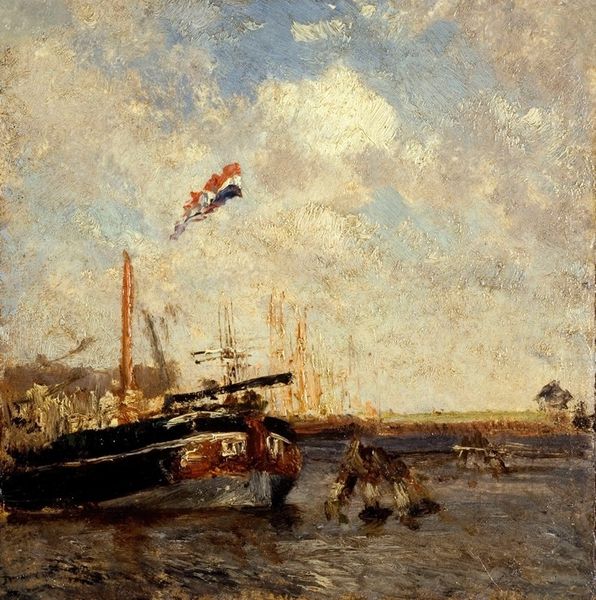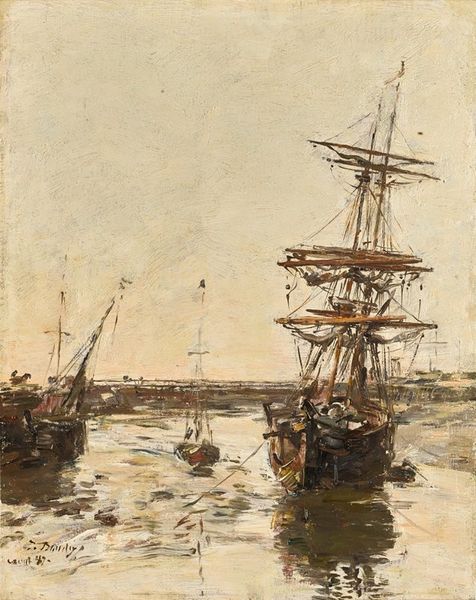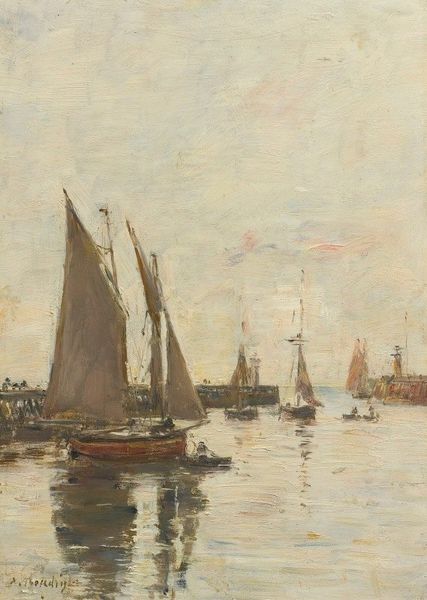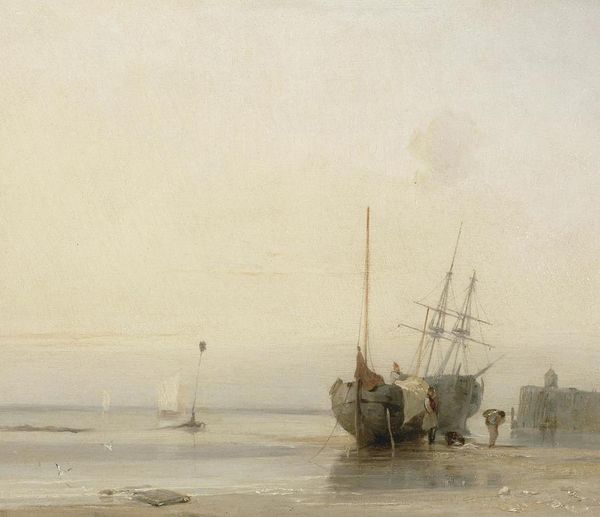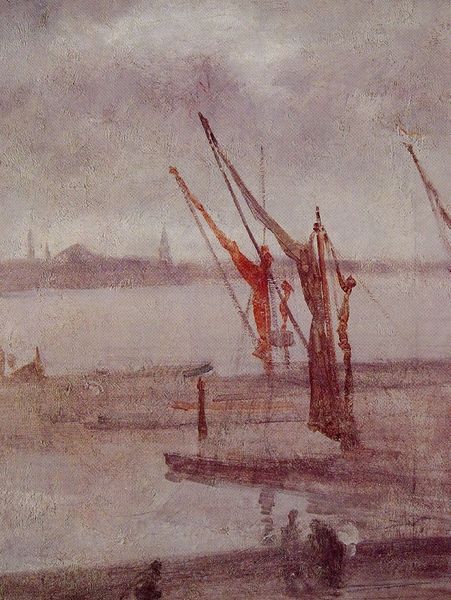
plein-air, oil-paint, impasto
#
impressionism
#
plein-air
#
oil-paint
#
landscape
#
charcoal drawing
#
impasto
#
mixed media
Copyright: Public Domain: Artvee
Curator: Welcome. Before us is James Abbott McNeill Whistler’s "Grey and Silver – Chelsea Wharf," painted circa 1864-1868. It's an oil on canvas. Editor: Dreary! But in an appealing way. It's almost all subdued grays and browns, very muted. I can almost smell the river. You can really see how he built up the paint in layers. Curator: Whistler's riverside scenes were radical. Traditionally, landscapes showcased the picturesque. He instead focused on the industrialized Thames, transforming it into a site of aesthetic beauty, defying societal expectations. Editor: Absolutely. And look at the marks—quick, loose strokes. You can tell it was likely painted *en plein air*. The process becomes so evident. We see the evidence of the artist confronting the physical environment and the materials at hand. It really shows how everyday labor creates art. Curator: Precisely. Whistler wanted to elevate the status of the working class subjects he depicted. There were huge social shifts in London during this period. Art played an important role as both an observer and reflector. His choice of subject validates laborers at Chelsea Wharf, even ennobling them. Editor: The materiality underscores that too. That build up of oil paint, it gives a solidity, a substance, even to something as fleeting as a cloudy day on the Thames. He treats the sky the same as a physical structure. Curator: And the work almost borders on abstraction; forms become secondary to tone and color, reflecting the growing interest in formalism during that time. This artistic approach mirrors how Whistler challenged established institutions by focusing on subjective, aesthetic experience over narrative. Editor: It’s a testament to how process and the handling of materials can reveal much about an artist's social outlook. The art really starts in the streets with workers doing their jobs. Curator: Yes. Whistler blurred the lines of the old and the new—of tradition and progress, challenging viewers to see beauty where they least expected. Editor: In essence, we're witnessing Whistler using paint to not only portray but almost literally rebuild a vision of labor and urban existence, defying any class preconceptions along the way.
Comments
No comments
Be the first to comment and join the conversation on the ultimate creative platform.
